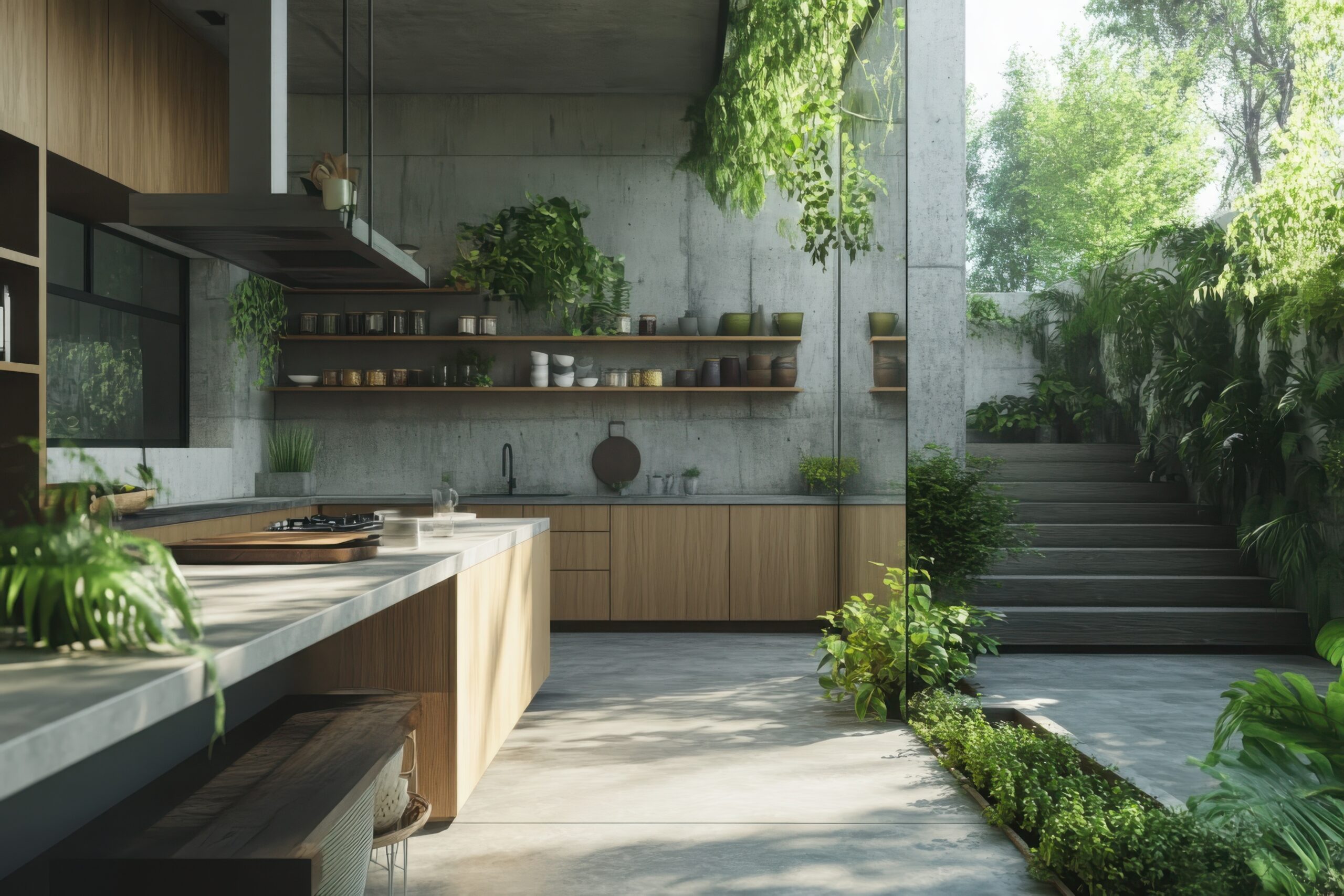Growing up in Brooklyn, I spent my early years surrounded by brick buildings, paved streets, and the constant energy of city life. But some of my fondest memories come from family trips to upstate New York, where I was free to roam through forests, feel the cool air of the mountains, and hear the rustling of leaves instead of honking horns. Those experiences shaped my love for nature and, ultimately, my career as a landscape architect.
Today, as cities grow denser and concrete continues to dominate our surroundings, there is an urgent need to reintroduce nature into urban spaces. That’s where biophilic design comes in. More than just adding trees to a sidewalk, biophilic design is about creating environments that foster a deep and meaningful connection between people and nature. It’s a movement that is gaining momentum—and for good reason.
What Is Biophilic Design?
Biophilic design is rooted in the idea that humans have an inherent connection to nature. It’s based on the concept of biophilia, a term popularized by biologist E.O. Wilson, which suggests that we are hardwired to seek connections with the natural world. In the context of urban planning and architecture, this means integrating nature into the built environment in ways that go beyond aesthetics.
Examples of biophilic design include rooftop gardens, green walls, natural daylight optimization, and even using materials like wood and stone to bring organic elements into our everyday spaces. Some cities are incorporating entire urban forests, while others are redesigning buildings to maximize access to sunlight, fresh air, and views of greenery. The goal is simple: to make nature an integral part of our daily lives, even in the most urbanized settings.
Why Biophilic Design Matters
The benefits of biophilic design extend far beyond making a city look more appealing. Research has shown that incorporating natural elements into urban environments can lead to improved mental health, increased productivity, and greater overall well-being.
For instance, studies have found that office workers with views of green spaces experience less stress and greater job satisfaction. Schools with natural light and outdoor learning areas see higher student engagement and academic performance. Even hospitals that incorporate greenery into their design report faster recovery times for patients.
On a broader scale, cities that embrace biophilic design can combat issues like the urban heat island effect, where concrete and asphalt trap heat, making cities unbearably hot in the summer. Green roofs and urban forests help absorb heat, regulate temperatures, and improve air quality. And let’s not forget biodiversity—biophilic design encourages the return of birds, pollinators, and other wildlife to urban spaces, creating healthier ecosystems.
Biophilic Design in Action
I’ve had the privilege of working on several projects that embrace biophilic design, and the impact has been truly inspiring. One of my favorite projects was the Brooklyn Green Corridor, where my team and I transformed unused urban spaces into a network of green walkways. By integrating native plants, rain gardens, and natural seating areas, we not only beautified the neighborhood but also created a space where residents could escape the concrete jungle, even if just for a few minutes a day.
Another project that stands out is NYC’s first carbon-neutral rooftop garden, where we designed an elevated green space that produces fresh food for the surrounding community. What once was a barren rooftop is now a thriving oasis, reducing the building’s energy use while fostering a stronger sense of community.
Globally, cities are embracing biophilic design in innovative ways. Singapore’s reputation as a “City in a Garden” is a testament to this movement, with buildings covered in lush vegetation, massive vertical gardens, and waterfront parks woven seamlessly into the city’s fabric. Meanwhile, projects like Bosco Verticale in Milan, a pair of residential towers blanketed in over 900 trees, show how biophilic design can be incorporated even into high-rise living.
Challenges and the Path Forward
While biophilic design offers undeniable benefits, it’s not without challenges. Space constraints, budget limitations, and resistance to change are common barriers, particularly in older, highly developed cities. However, I believe these hurdles can be overcome with creative thinking, strong advocacy, and a shift in how we prioritize urban development.
Policymakers need to recognize the long-term economic and health benefits of biophilic design and integrate it into zoning laws and urban planning policies. Architects, landscape designers, and developers must work together to make green infrastructure a standard, not an afterthought. And as city dwellers, we can all play a role by supporting local greening initiatives, pushing for more parks, and even incorporating more nature into our own homes and workplaces.
A Future Where Cities and Nature Coexist
The rise of biophilic design is not just a trend—it’s a necessary shift in how we build our cities. As someone who has spent a lifetime working to bring green spaces into urban environments, I can confidently say that this movement has the power to transform not just our physical surroundings but also our quality of life.
Imagine a future where every street is lined with trees, where buildings breathe with living walls, and where stepping out of your home feels more like stepping into a park than a concrete maze. That’s the vision biophilic design is working toward—a world where cities and nature don’t just coexist but thrive together.
And if my childhood trips to the forests of upstate New York taught me anything, it’s that a little more nature in our daily lives can make all the difference.
